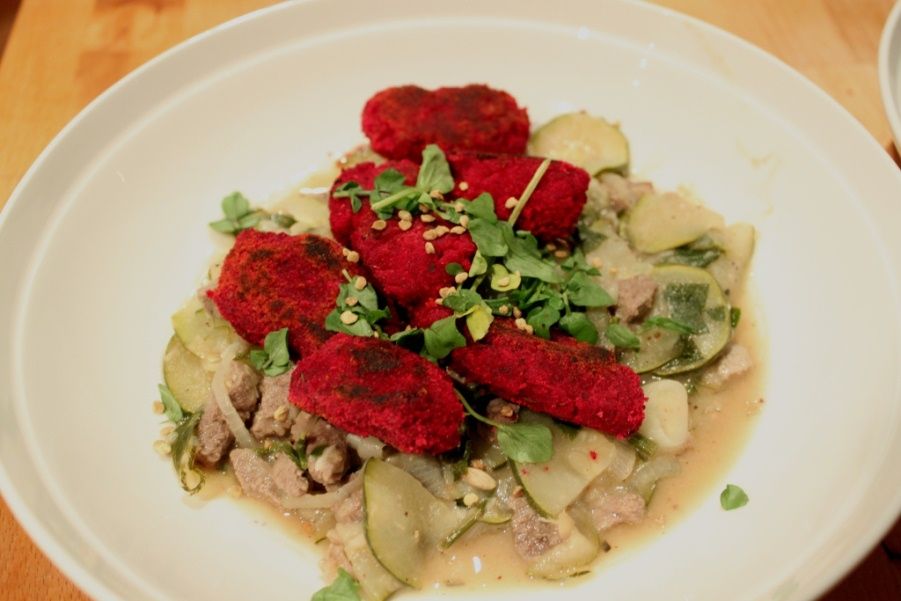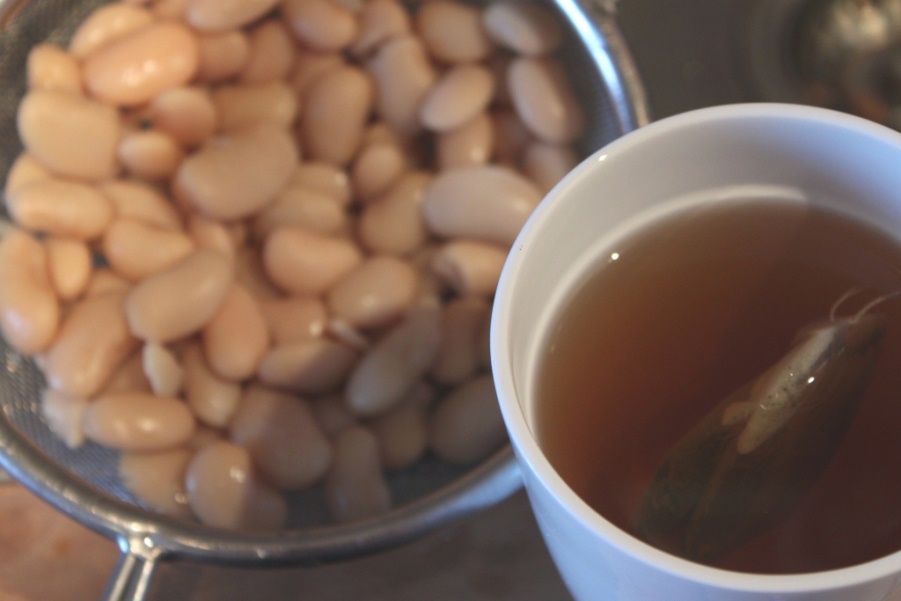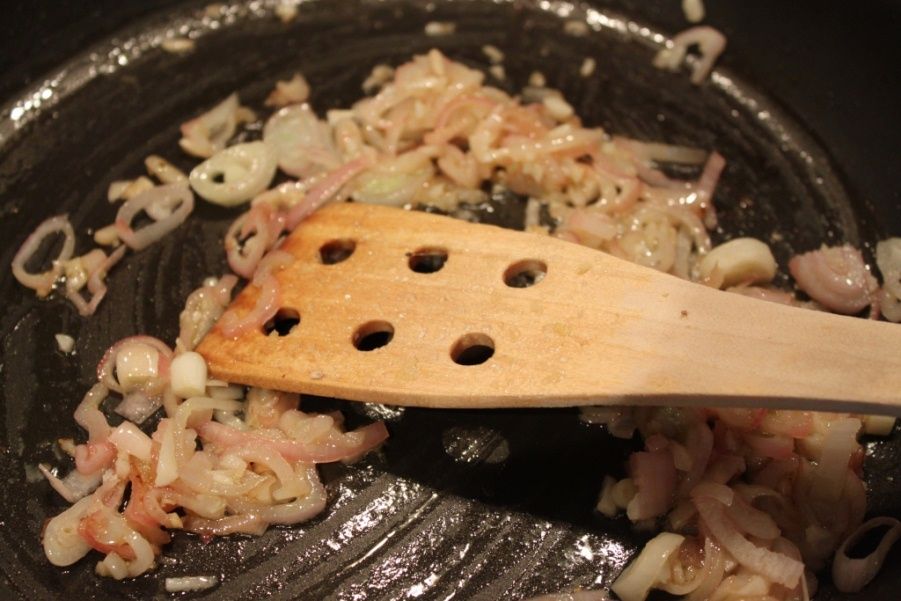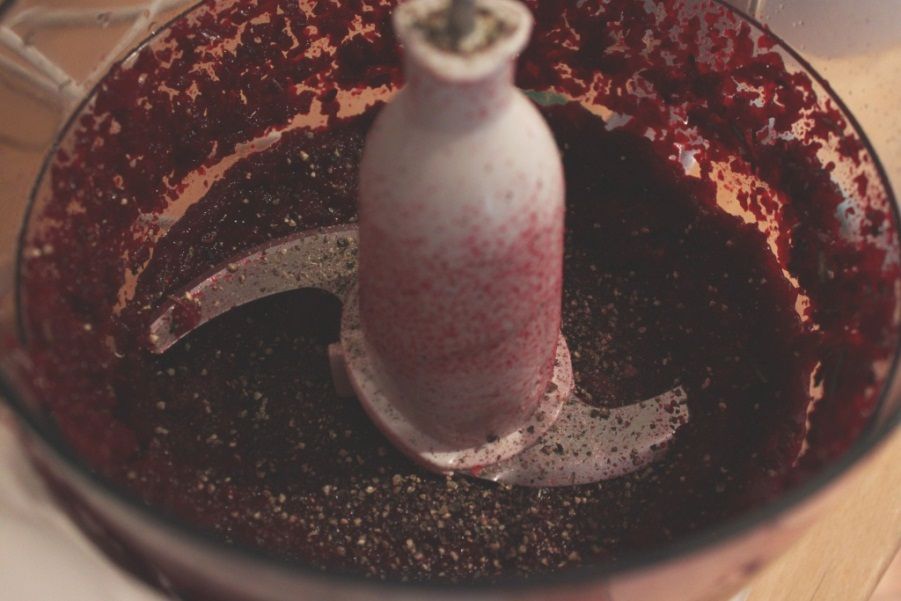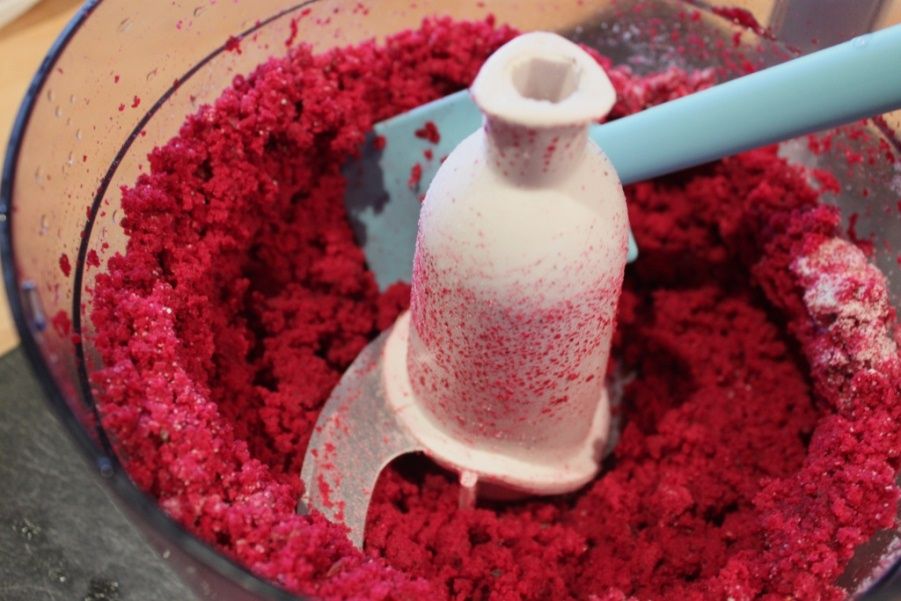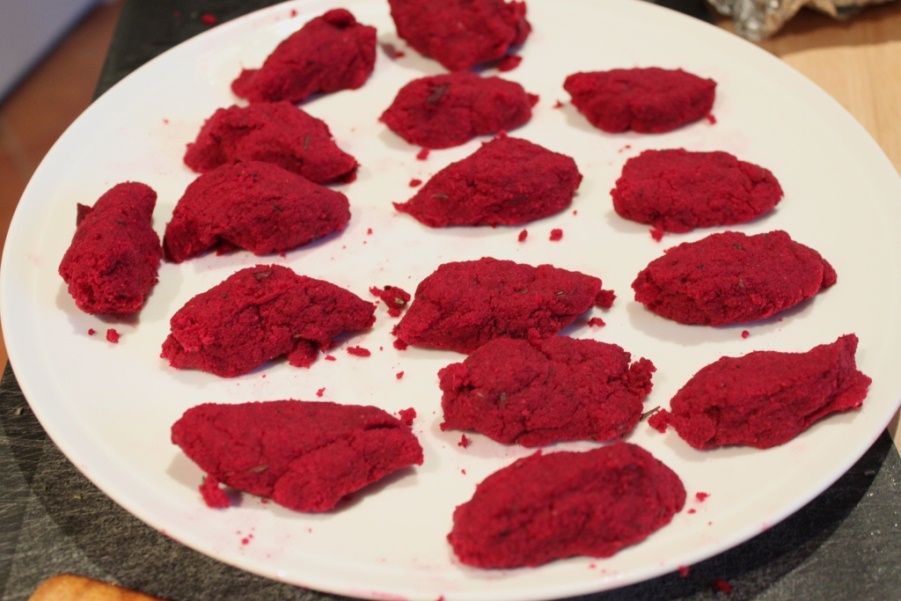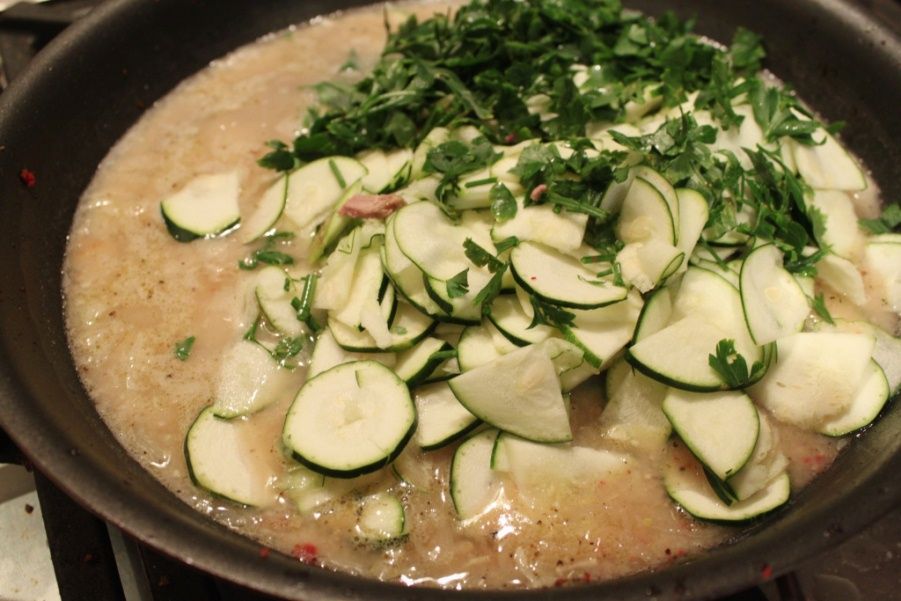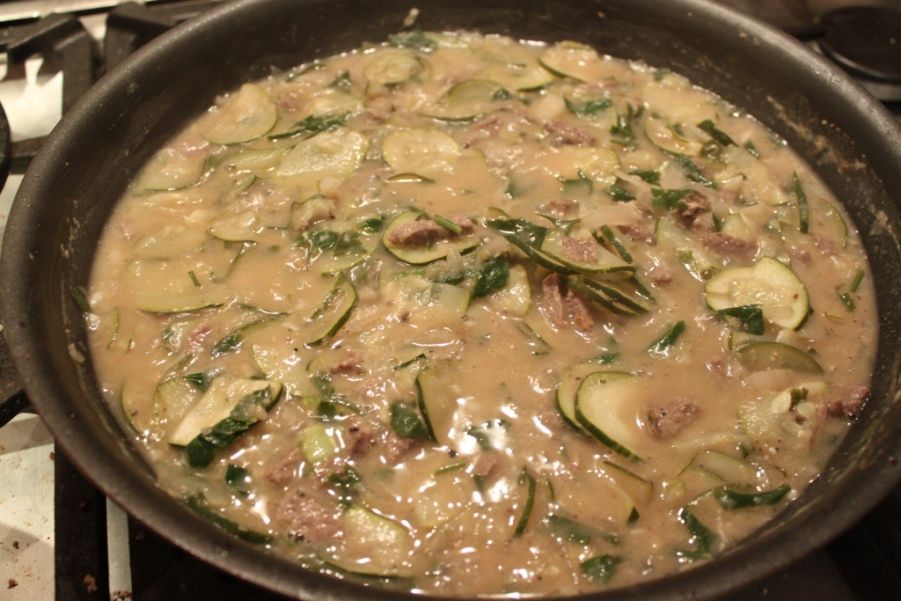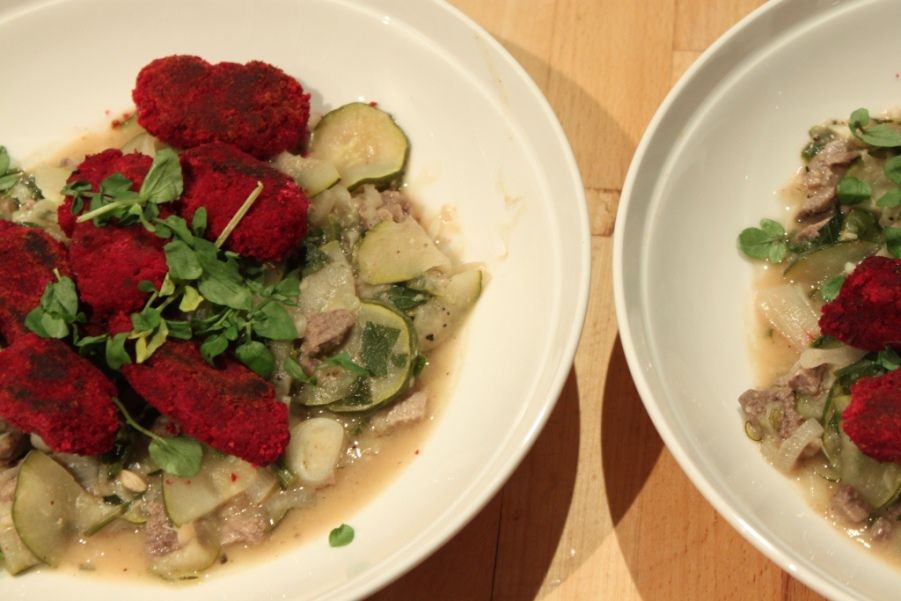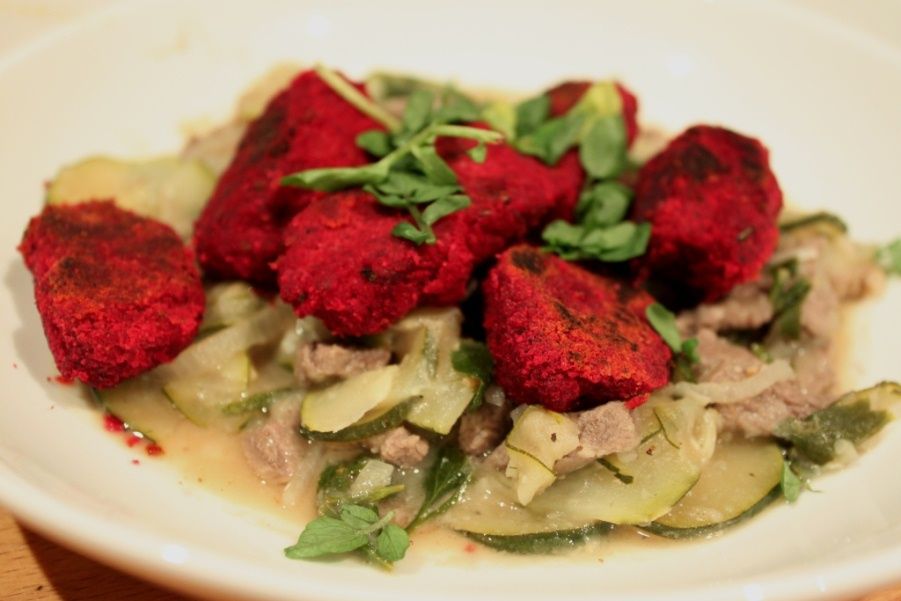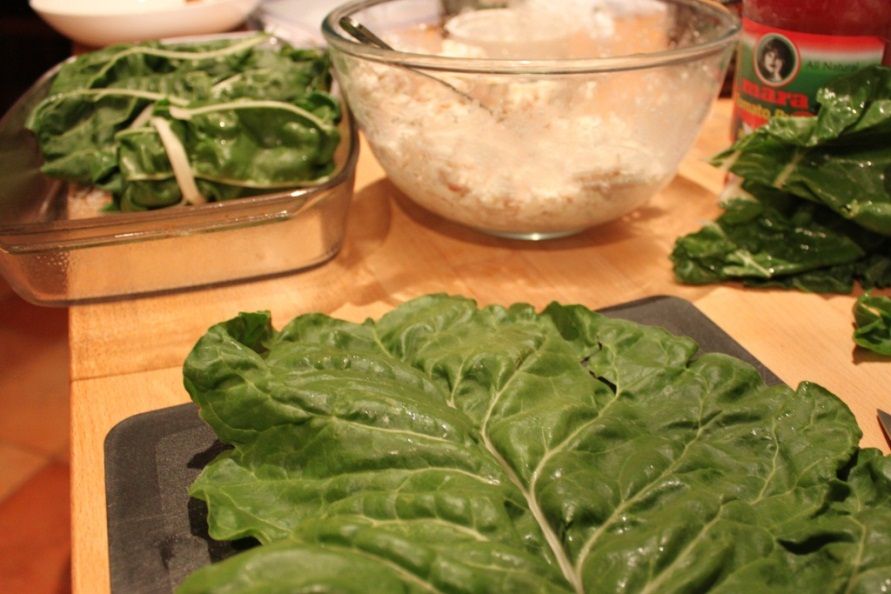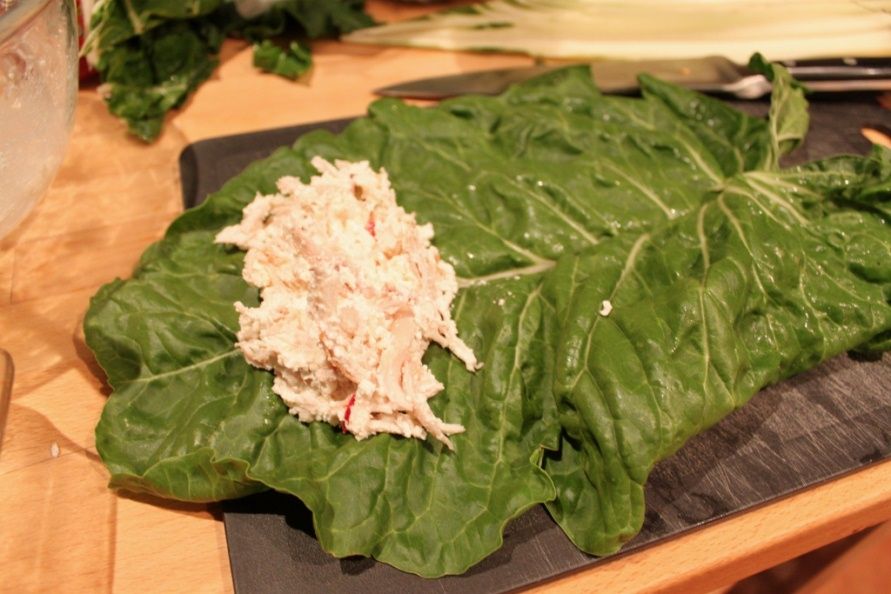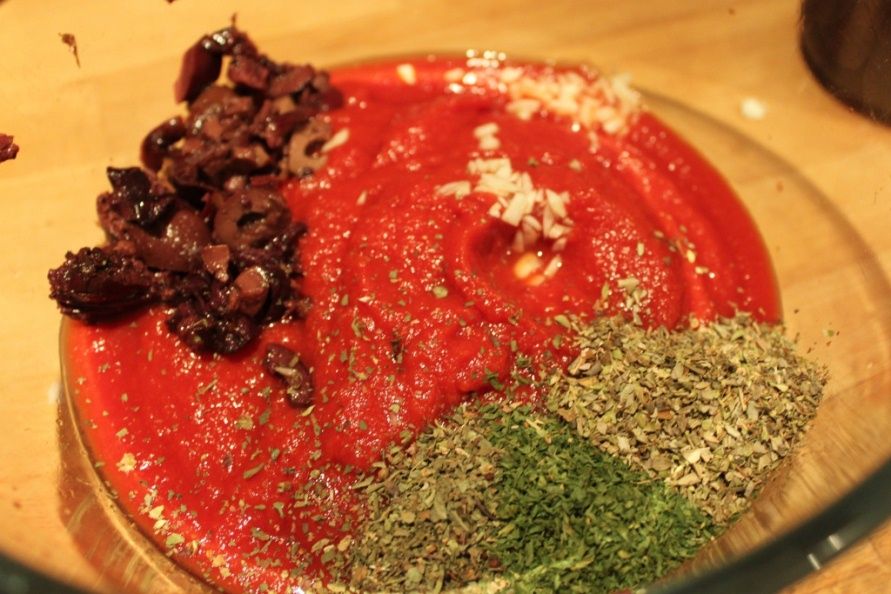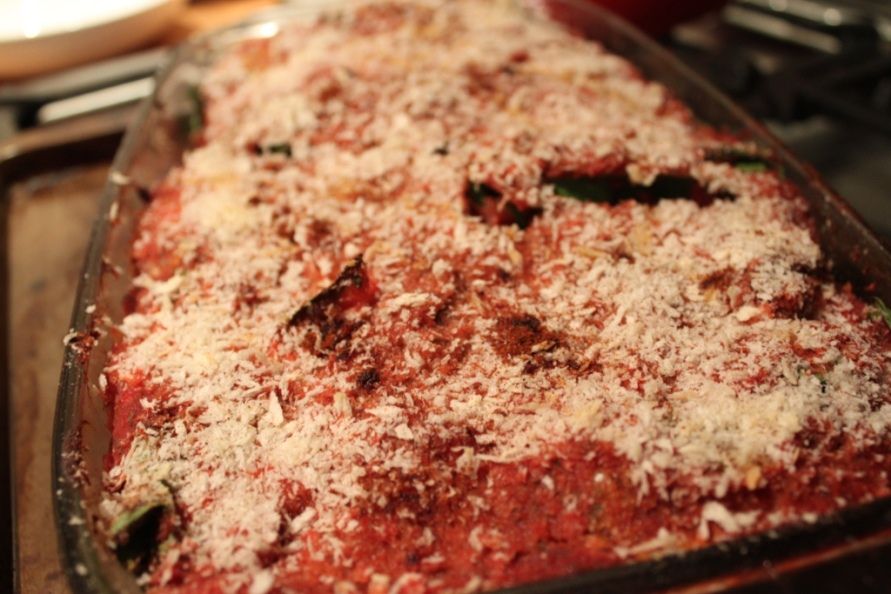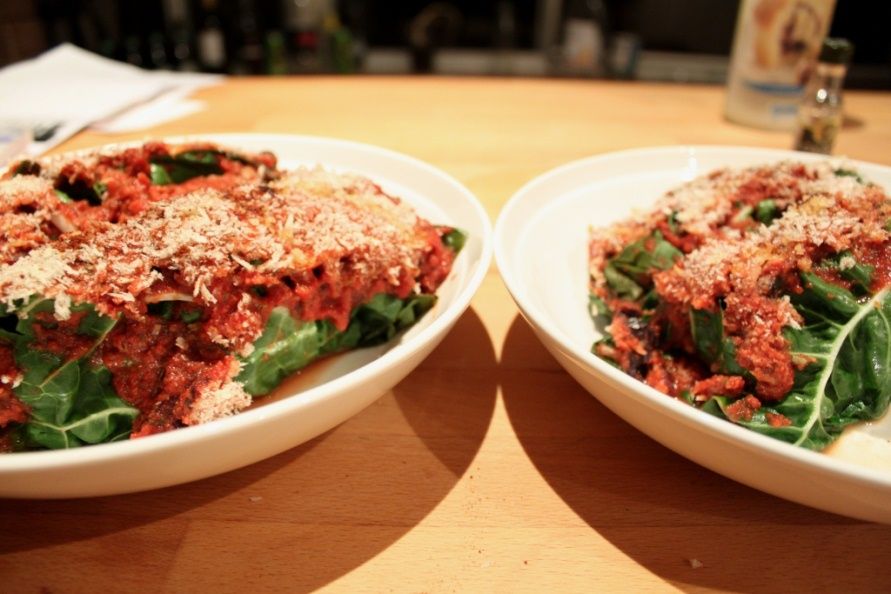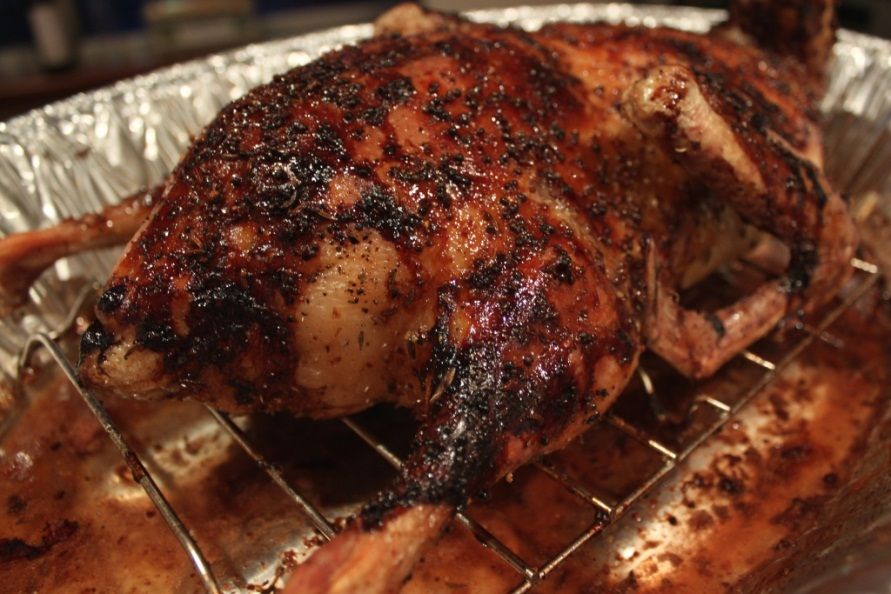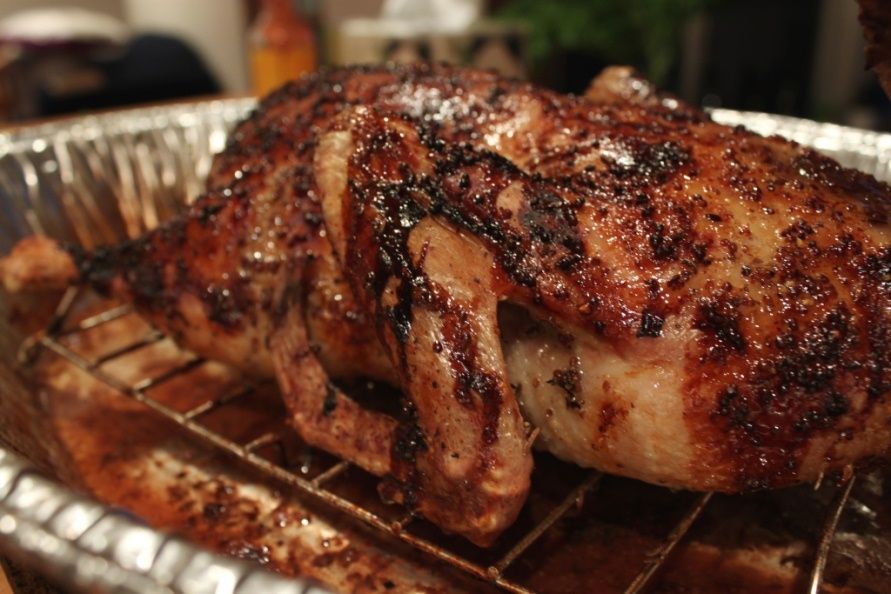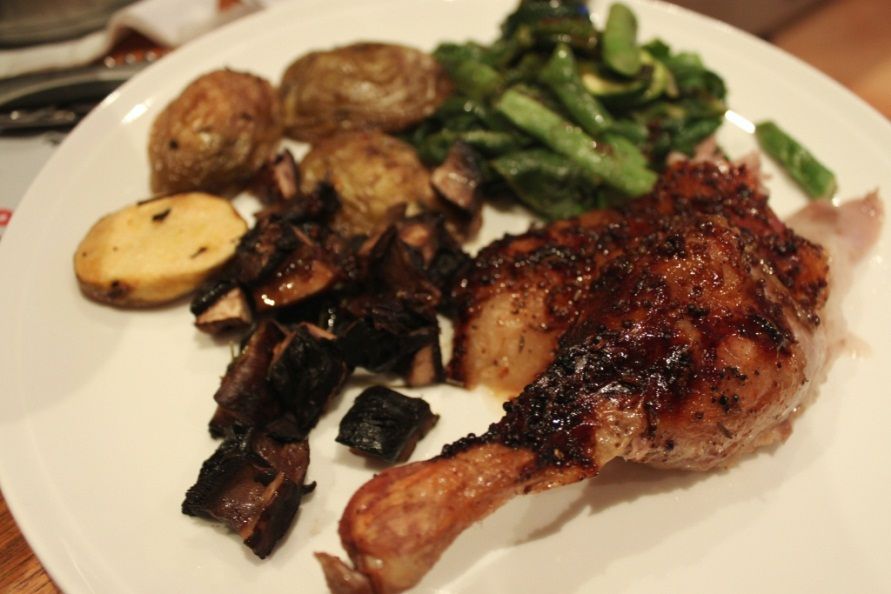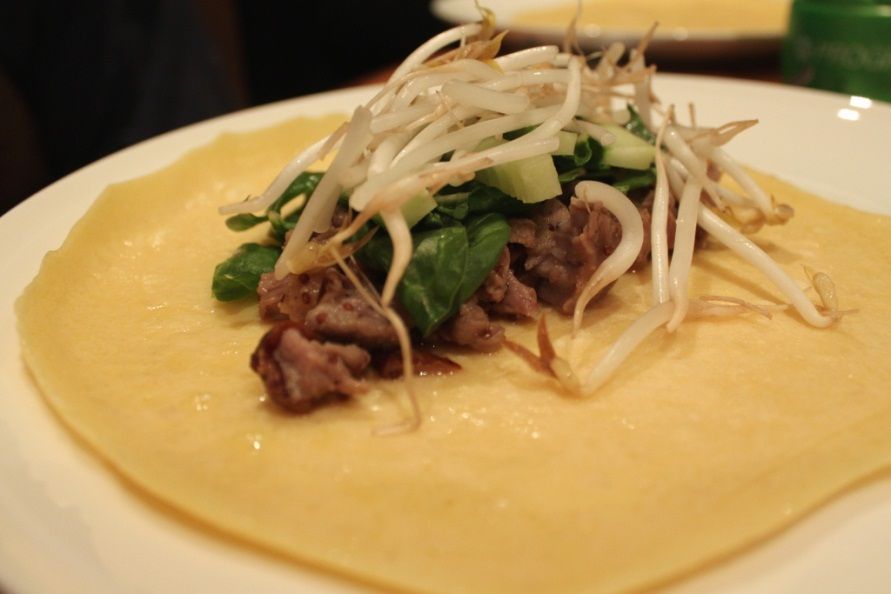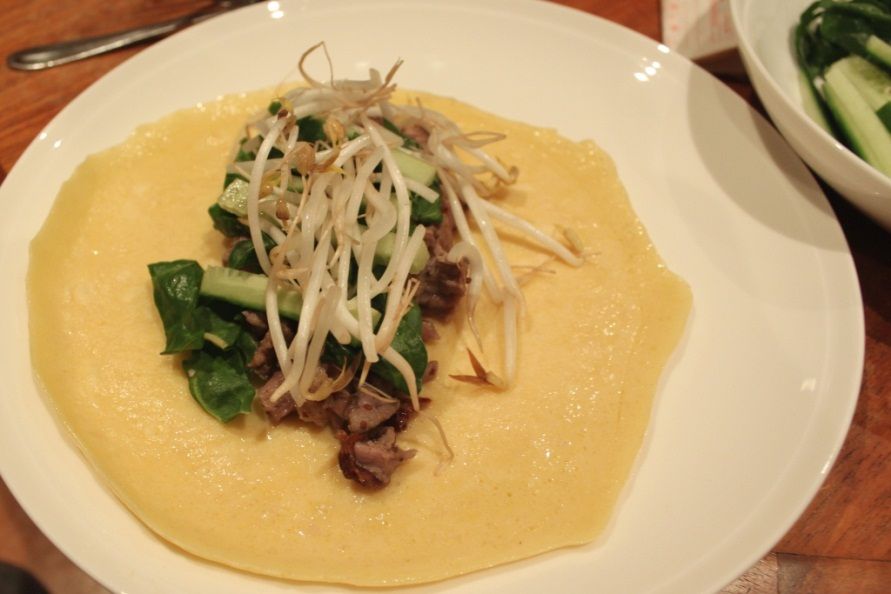For me, the easiest way to make sure I eat well and healthfully is to be prepared. And because I can be seriously lazy, or time-poor (or both), I like to do prep work lazily too. One of the easiest tricks is to just cook too much and you have immediate leftovers. Whenever Lance and I cook a roast (because usually the prep work is a team effort on roasts), I always roast more vegetables than we’ll eat, which I then will use for lunches to take to work. Given that I don’t peel any vegetables, only scrub them before roasting, it really is no extra effort at all. So when Sunday came around and we popped a roast on, I also roasted 2 large beetroot and set them aside to make this dish.
You may remember my sweet potato and coconut gnocchi that was inspired by a dish I never ate at Solomon’s? Well, what we did
eat was beetroot and coconut gnocchi, and that was amazing too. So I wanted to
give that a go, as well, giving the flavours a Skamp twist. To be honest, these gnocchi were slightly too dry
for my liking. I imagine they need either some egg, or perhaps just some oil
added into the mixture to bind it better. The sweet potato texture didn’t
require anything extra to hold their shape and the mouth feel was perfect. These
were a touch dry, so next attempt I will add maybe 2 tbsp coconut oil to the
beetroot mixture. Eating it with sauce took away the dryness, but it needed the sauce.
Seeing as the beetroot are really earthy, and I
was going to add some leftover rosemary roasted lamb to the sauce, I decided to
add caraway and rosemary to the gnocchi to enhance this rich earthiness and the
flavour was unbelievable. For the sauce, I made a ‘creamy’ sauce out of butter
beans and green tea, to add grassiness to the earthiness, with some fresh lemon
and parsley to brighten the flavours up. Then added some peppery watercress and
sweet bee pollen to garnish and round out the flavours even more. So. Good. To
keep this vegan, you can omit the roast lamb (and bee pollen if that’s your
deal). I tasted the sauce and some crumbs without the lamb and it didn’t need
the meat.
Beetroot and Coconut Gnocchi with Green Tea
Butter Bean Sauce
(serves 4)
2 large roasted beetroot
Coconut flour as necessary – I used 10 tbsp
½ tsp salt
½ tsp pepper
½ tsp caraway seeds
1 tsp fresh minced rosemary
Coconut oil for frying
1 tin butter beans, rinsed and drained
1 cup strong brewed green tea
2 shallots, diced
2 cloves garlic, minced
1 zucchini, finely sliced into rounds
Big handful parsley, roughly chopped
1 cup shredded cooked lamb
Salt and pepper to taste
Zest and juice of 1 lemon
Bee pollen and cress leaves to serve
Preheat the oven to 150C to keep the cooked
gnocchi warm. Pop the kettle on. Brew a cup of green tea, allowing to steep for
a good 5 minutes at least, to develop the flavour. Set aside until ready.
Put the beetroot into your food processor and
pulse to break up. Add the salt, pepper, caraway seeds and rosemary, and
process until smooth. One tablespoon at a time, add coconut flour and pulse to
combine until it forms a dry-ish dough, similar texture to play dough.
Scoop teaspoonfuls and roll to form gnocchi
shapes, put on a plate. Heat a frypan to medium and add a knob of coconut oil
and allow to melt and heat. Add a handful of gnocchi at a time, fry for 3
minutes or so until ‘golden’ and then flip and cook the other side. Set on a
plate and pop in the oven to keep warm. Repeat with all of the gnocchi.
In your blender, blend the green tea and butter
beans until smooth. In a pan or small pot, add the butter bean mixture and zucchini
and gently simmer for 10 minutes or so until thickened slightly, warm and the
zucchini is soft. Add the cooked lamb and after the meat has heated through
(approximately 5 minutes) add parsley, lemon juice and salt and pepper.
